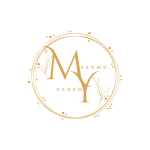
Nouns are the names of everything we see, feel, and imagine — from people to places, from objects to emotions. They help us talk about the world around us and describe our experiences. In this lesson, we’ll explore what nouns are, the different types of nouns, and how they help us create clear, powerful sentences in English.
A noun is a word that names a person, place, thing, or idea.
Think of it like a label — it tells us what or who we’re talking about in a sentence.
We can group basic nouns into four main categories:
Names of individuals or groups.
Examples: teacher, friend, doctor, family, child, group
Names of specific locations.
Examples: school, park, city, mountain, store
Names of physical objects — things you can see or touch.
Examples: book, chair, flower, phone, car
Names of feelings, qualities, or thoughts — things you can’t touch.
Examples: love, freedom, peace, time, happiness
Refer to one person, place, thing, or idea.
Examples: cat, book, school
Refer to more than one and are usually formed by adding -s or -es.
Examples: cats, books, schools
Some nouns don’t follow the usual rules — they change form completely!
Examples:
child → children
foot → feet
person → people
These are general names. They’re only capitalized at the beginning of a sentence.
Examples: city, dog, book, boy
These are specific names of people, places, or titles. Always capitalized.
Examples: Paris, Fido, Harry Potter, John Smith
These can be counted — one, two, three…
Examples: apple, friend, chair
These cannot be counted and usually don’t have a plural form.
Examples: water, advice, air, information
Noun – A word that names a person, place, thing, or idea.
Singular – Refers to one.
Plural – Refers to more than one.
Common noun – A general name for something (e.g., dog, city).
Proper noun – A specific name, always capitalized (e.g., London, Maria).
Countable noun – Can be counted (e.g., apple, pen).
Uncountable noun – Cannot be counted (e.g., water, air).
Idea – A thought, feeling, or concept (e.g., freedom, happiness).
Use these questions to guide a class talk:
Can you name some nouns around you right now?
What is one proper noun you know? What does it name?
Why is it important to learn about nouns?
What are some nouns that describe feelings?
Encourage students to speak in full sentences.
Work with a partner to complete the following tasks:
Choose a scene (e.g., a park, a classroom, a birthday party).
Together, list at least 3 people, 3 places, 3 things, and 3 ideas you might find there.
Share your list with another pair or the class.
Create a short dialogue using at least 5 different nouns (any type).
Example:
— A: “Did you see that dog at the park?”
— B: “Yes! It ran past the bench near the lake. What a beautiful afternoon!”
List 5 examples of each noun type: People, Places, Things, Ideas
Write 5 sentences. Each one must include at least one noun.
Find a photo. Write down all the nouns you can identify.
Sort this list: love, doctor, car, Paris, advice, friend
→ into: People / Places / Things / Ideas
Convert the following:
apple → _______
children → _______
city → _______
feet → _______
✔️ Review key vocabulary and types of nouns.
✔️ Share some of the creative ideas or dialogues from students.
✔️ Reflect: Why are nouns important? How do they help us communicate clearly?
✔️ Challenge: Try to notice as many nouns as you can today — at school, at home, and in your thoughts!
Noun Diary:
Write 5 sentences about your day using at least one noun in each sentence. Underline the nouns.
Noun Sort Challenge:
List 3 nouns each for:
People
Places
Things
Ideas
Picture Activity (Optional):
Find a photo from a newspaper, book, or online.
Describe it using at least 8 different nouns.